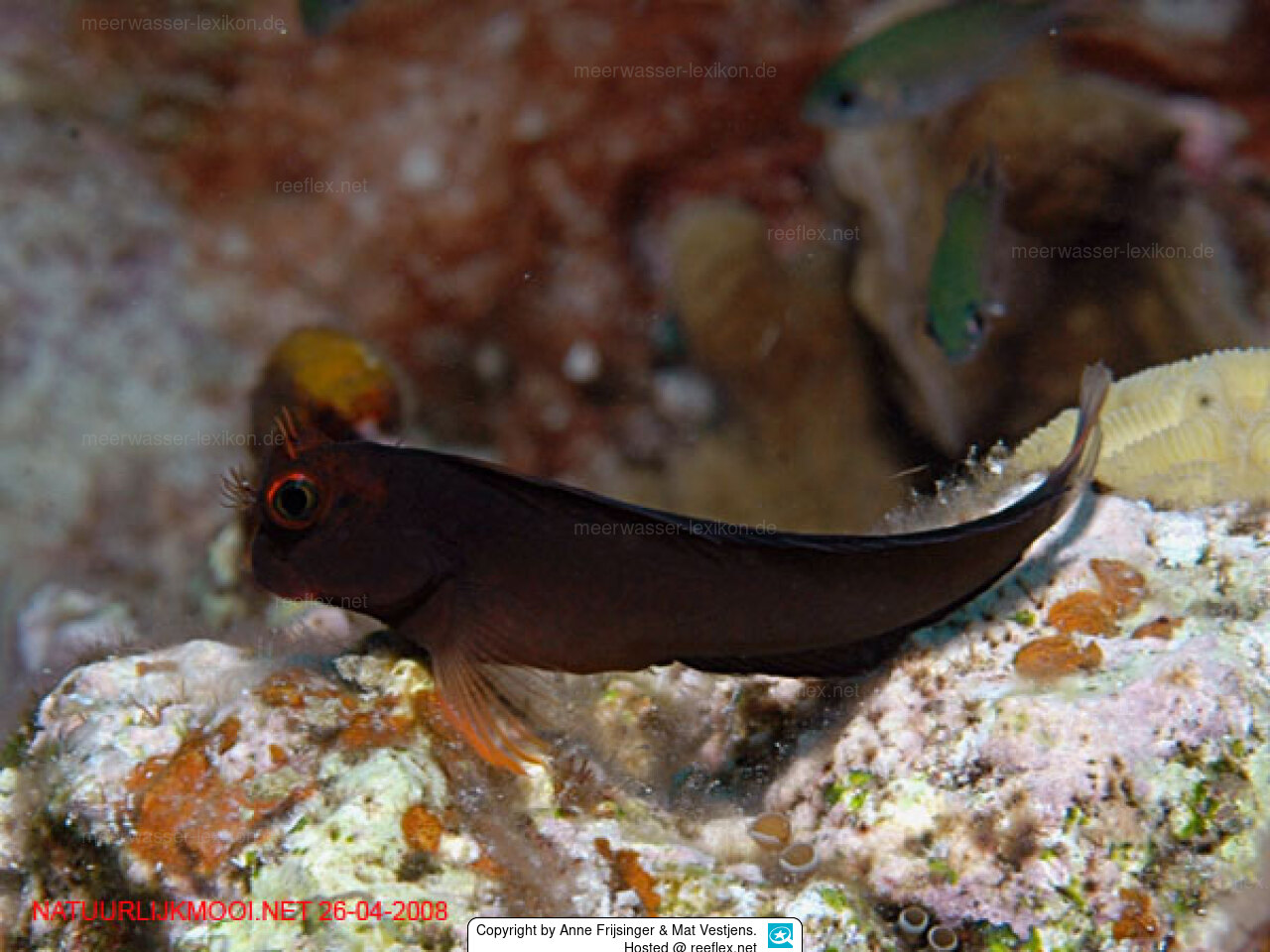Info
(Silvester, 1915)
Distribution:
Western Central Atlantic: North Carolina, USA and Bermuda southward to Brazil, including the western Gulf of Mexico and the Antilles.
Biology:
Inhabits shallow, clear waters with coral or rock bottoms.
Territorial.Oviparous. Eggs are demersal and adhesive.
Synonymised taxa:
Ophioblennius atlanticus macclurei (Silvester, 1915)
Rupiscartes macclurei Silvester, 1915
Jumping guard
A jumping guard prevents (nocturnal) fish from jumping out.
Wrasses, blennies, hawkfishs and gobies jump out of an unprotected tank in fright if their night rest is disturbed, unfortunately these jumpers are found dried up in the morning on carpets, glass edges or later behind the tank.
https://www.korallenriff.de/en/article/1925_5_Jump_Protection_Solutions_for_Fish_in_the_Aquarium__5_Net_Covers.html
A small night light also helps, as it provides the fish with a means of orientation in the dark!
Distribution:
Western Central Atlantic: North Carolina, USA and Bermuda southward to Brazil, including the western Gulf of Mexico and the Antilles.
Biology:
Inhabits shallow, clear waters with coral or rock bottoms.
Territorial.Oviparous. Eggs are demersal and adhesive.
Synonymised taxa:
Ophioblennius atlanticus macclurei (Silvester, 1915)
Rupiscartes macclurei Silvester, 1915
Jumping guard
A jumping guard prevents (nocturnal) fish from jumping out.
Wrasses, blennies, hawkfishs and gobies jump out of an unprotected tank in fright if their night rest is disturbed, unfortunately these jumpers are found dried up in the morning on carpets, glass edges or later behind the tank.
https://www.korallenriff.de/en/article/1925_5_Jump_Protection_Solutions_for_Fish_in_the_Aquarium__5_Net_Covers.html
A small night light also helps, as it provides the fish with a means of orientation in the dark!







 Anne Frijsinger & Mat Vestjens, Holland
Anne Frijsinger & Mat Vestjens, Holland










